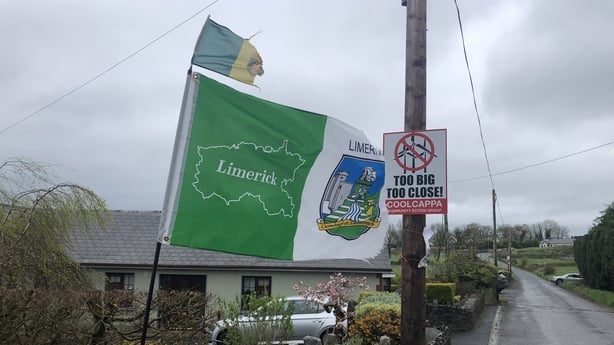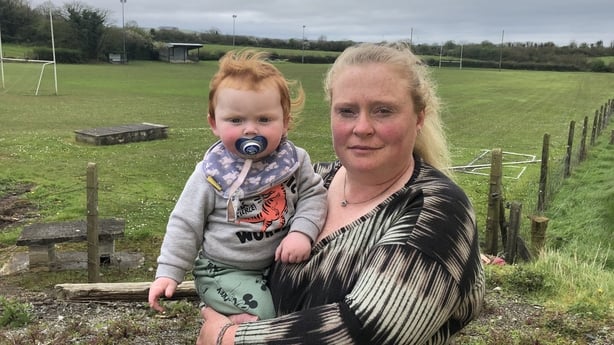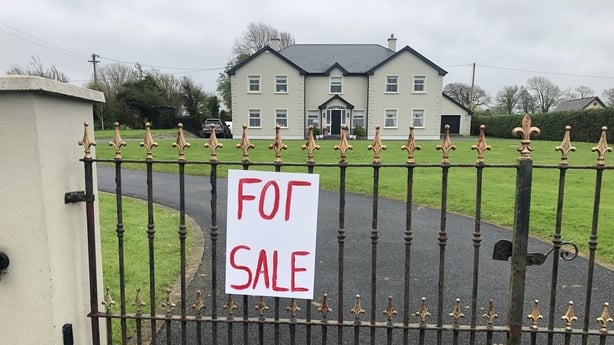Families in the rural townland of Coolcappa in Co Limerick have voiced their concerns that a proposed wind farm there could impact their health and quality of life.
It follows a recent High Court case which ruled that noise from wind turbines did constitute a nuisance and could interfere with people's enjoyment of their homes.
That significant judgment is being examined by the Attorney General, the Departments of Housing and Environment, and the wind energy industry.
Coolcappa is a tiny rural parish located near Newcastle West, where the Ballynisky Green Energy company plans to locate six wind turbines that are 158m tall across a number of fields there.
Some of the turbines are to be within 700m of houses there. The company has its headquarters in Adare, Co Limerick.
Local people are concerned about the close proximity and how noise from turbines may impact their quality of life.

They have erected signs outlining their opposition and said the planned turbines are "too big, too loud and too close" to their homes and the local Coolcappa National School, where over 50 pupils attend.
Many have placed 'for sale' signs on their houses fearing that a closely located wind farm could devalue their homes as nobody will want to live too close to one.
Noreen Stokes is one of a number of local people opposed to the wind farm.
"Our basic concerns are that these turbines are going to be 158m high - the highest in Limerick. We are not opposed to wind energy, but we are very concerned if they are being built in fields behind our homes," she said.
"This wind farm is planned for the centre of our village, it’s not on the periphery, it dead in the centre," Ms Stokes said.
"We live in a quiet, tranquil, rural area surrounded by nature and the sounds of farming life. We do feel that noise from the turbines could also disrupt that quiet, rural, lifestyle," she said.
Mother-of-four Mary Barrett also lives in Coolcappa. She has concerns about health and proximity to the wind turbines.

"My family have lived here for generations. We have a thriving rural community, and a busy local school.
"I’m afraid that my young kids will choose not to stay here in the years to come. That they may never get planning permission for their homes," Ms Barrett said.
"A wind farm in the centre of Coolcappa will finish this community I fear," she added.
The HSE, the Department of Health and guidance from the World Health Organization refer to several studies which said there is no reliable or consistent evidence that wind farms cause adverse human health problems.
However, the fears in the Coolcappa community about noise from wind turbines have been underpinned by a recent High Court judgment.
In a case taken by two couples who lived close to two wind turbines in Ballyduff in Enniscorthy, Co Wexford, the court found that the noise generated from a wind turbine at the location did constitute a nuisance and a substantial interference with people's enjoyment of their homes there, even though they were built within planning regulations.

Ballynisky Green Energy has said its proposed renewable energy project will harness Ireland's wind resource and enable a move away from fossil fuels and reduce emissions.
It also said it has engaged in extensive consultation with the Coolcappa community since 2022, including a public exhibition, information leaflets and door-to-door visits.
The company added that its project will comply with noise regulations and, once operational, a noise monitoring regime will be put in place.
Wind energy is also a crucial part of the Government's green energy plans for the future to meet climate targets and secure energy production and price.
More wind farms are also in the pipeline to achieve this.
Wind Energy Ireland CEO Noel Cunniffe said in order for Ireland to meet its 2030 climate targets the country needs to double the amount of wind farms it has.
"About 40% of our electricity is coming from onshore wind, and we need to get that up to 80% coming from onshore and offshore wind and solar energy," Mr Cunniffe said.
He added: "There is a lot of work to do over the next six years, but if we can do it we can make Ireland energy independent, we can reduce electricity bills, cut our carbon emissions, and really help our energy security."







